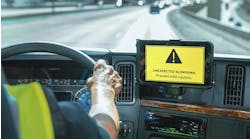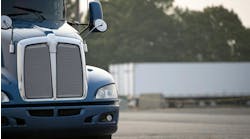He was driving on the Long Island Expressway on Thursday July 16, 1981 traveling in the left lane at approximately 65 mph. For some unknown reason he engaged the emergency flashers near Exit 40 in Jericho, NY. He slowed to about 15 miles an hour and veered into the center lane. Nearly colliding with another vehicle, he swerved back left, then back right. But this time he swerved directly in front of a Supermarkets General tractor-trailer truck. The driver could not brake in time and rammed the rear end of the blue 1975 VW Rabbit, rupturing the gas tank and causing it to burst into flames. Unfortunately, the truck that ended the life of singer/songwriter Harry Chapin was one that I had leased to Supermarkets General. That incident began my advocacy for safety specifications in the equipment we lease.
Today, new technology offers solutions. DSRC, the acronym for Dedicated Short Range Communications, is a two-way, short-to-medium wireless communications capability in transportation vehicles. The Federal Communications Commission allocated 75 MHz of spectrum in the 5.9 GHz band for use by Intelligent Transportation Systems (ITS).
Wireless communications allow vehicles to talk to each other (V2V) and V2I roadside infrastructure such as traffic lights. Requiring V2V communication capability in new vehicles will facilitate the development and introduction of a number of advanced vehicle safety applications. Some crash warning V2V applications, like Intersection Movement Assist (IMA) and Left Turn Assist (LTA), rely on V2V-based messages to obtain information that detects and warns drivers of possible safety risk situations where other technologies have less capability.
For example, V2V communications are capable of giving the vehicle a 360 degree awareness of other vehicles even in situations where the driver cannot see them. Using vehicle position and speed information received from nearby vehicles the onboard computer can warn the driver of hazardous situations such as a vehicle running a red light helping avoid intersection collisions which are among the most deadly crashes that U.S. drivers currently face. The V2V system can alert drivers of a car braking ahead even when the driver’s vision is blocked by other cars and trucks.
The transportation industry is embarking on an era of hyper-change in vehicle safety technologies that in five years will be greater than the combined changes in the previous forty years. While this particular technology may require government mandates and time to take root and grow, there is little doubt that it will provide for safer highways and ultimately save lives.


